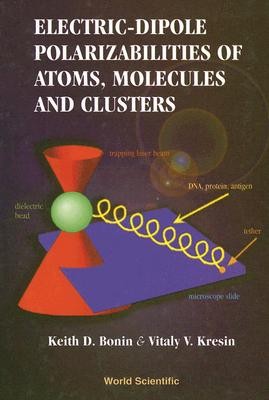
- We will send in 10–14 business days.
- Author: Keith Bonin
- Publisher: World Scientific Publishing Company
- Year: 1997
- Pages: 247
- ISBN-10: 9810224931
- ISBN-13: 9789810224936
- Format: 15.4 x 23.2 x 1.9 cm, kieti viršeliai
- Language: English
- SAVE -10% with code: EXTRA
Electric-Dipole Polarizabilities of Atoms, Molecules and Clusters (e-book) (used book) | bookbook.eu
Reviews
Description
This book is an in-depth review of experiment and theory on electric-dipole polarizabilities. It is broad in scope, encompassing atomic, molecular, and cluster polarizabilities. Both static and dynamic polarizabilities are treated (in the absence of absorption) and a full tensor picture of the polarizability is used. Traditional experimental techniques for measuring electric polarizabilities are described in detail. Recently developed experimental methods, including light forces, position-sensitive time-of-flight deflection, and atom interferometry, are also extensively discussed. Theoretical techniques for calculating polarizabilities are reviewed, including a discussion on the use of Gaussian basis sets. Many important comparisons between theory and experiment are summarized in an extensive set of tables of polarizabilities of important atoms, molecules, and clusters. Applications of polarizabilities to many areas of chemistry and physics are described, including optics, chemical structure, interactions of gases and particles with surfaces, and the interaction of molecules with light. The emphasis is on a lucid presentation of the ideas and results with up-to-date discussions on important applications such as optical tweezers and nanostructure fabrication. This book provides an excellent overview of the importance of polarizabilities in understanding the physical, electronic, and optical properties of particles in a regime that goes from free atoms to condensed-phase clusters.
EXTRA 10 % discount with code: EXTRA
The promotion ends in 22d.00:38:40
The discount code is valid when purchasing from 10 €. Discounts do not stack.
- Author: Keith Bonin
- Publisher: World Scientific Publishing Company
- Year: 1997
- Pages: 247
- ISBN-10: 9810224931
- ISBN-13: 9789810224936
- Format: 15.4 x 23.2 x 1.9 cm, kieti viršeliai
- Language: English English
This book is an in-depth review of experiment and theory on electric-dipole polarizabilities. It is broad in scope, encompassing atomic, molecular, and cluster polarizabilities. Both static and dynamic polarizabilities are treated (in the absence of absorption) and a full tensor picture of the polarizability is used. Traditional experimental techniques for measuring electric polarizabilities are described in detail. Recently developed experimental methods, including light forces, position-sensitive time-of-flight deflection, and atom interferometry, are also extensively discussed. Theoretical techniques for calculating polarizabilities are reviewed, including a discussion on the use of Gaussian basis sets. Many important comparisons between theory and experiment are summarized in an extensive set of tables of polarizabilities of important atoms, molecules, and clusters. Applications of polarizabilities to many areas of chemistry and physics are described, including optics, chemical structure, interactions of gases and particles with surfaces, and the interaction of molecules with light. The emphasis is on a lucid presentation of the ideas and results with up-to-date discussions on important applications such as optical tweezers and nanostructure fabrication. This book provides an excellent overview of the importance of polarizabilities in understanding the physical, electronic, and optical properties of particles in a regime that goes from free atoms to condensed-phase clusters.


Reviews